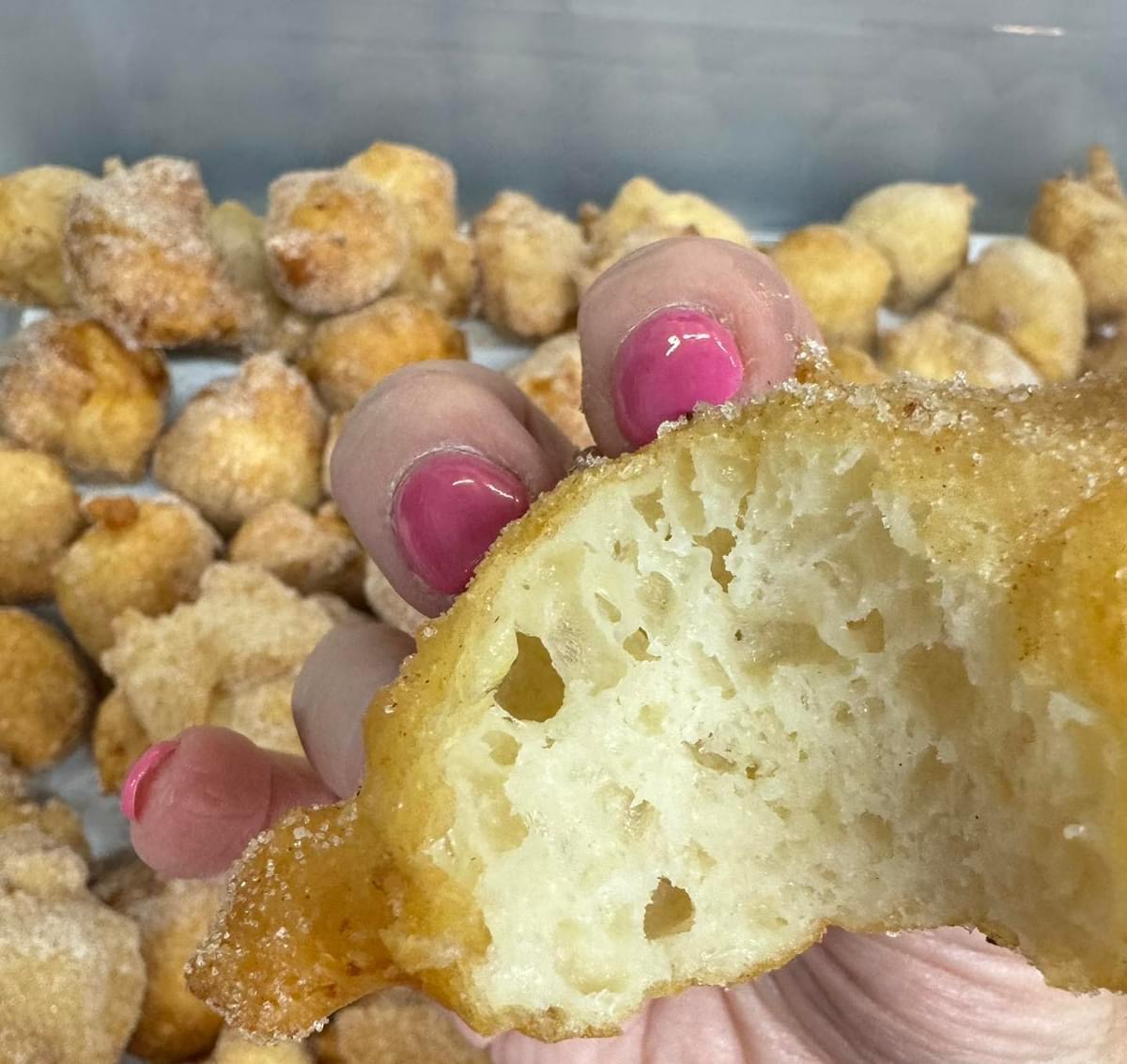If you're a fan of donut holes, you'll love sfingi, the quintessential donut of Sicily. While commonly served on Saint Joseph’s Day and at Christmastime, these sweet and sometimes savory treats are a hit any time of the year. I caught up with Sicilian Food Tours owner Carmel Ruggeri to chat about her version of sfingi, which reminds me of my own Nonna's recipe.
Tell me about your background.
I was born in Australia. My parents migrated to Sydney in the 60s. They are both from Scoglitti, which is located on the south coast of Sicily. I have owned many Italian restaurants in Sydney and have always had a serious passion for food. I started tours about 13 years ago because my customers were continuously saying, "when are you going to take me to Sicily, Carmel?" I base myself in Scoglitti when I am in Sicily. It is a quaint little fishing village located on the south coast. White sandy beaches and it has numerous amazing seafood restaurants which people from all over the island come to visit.
What does your heritage mean to you?
I am a very proud Sicilian. Sicily has a rich history of mixed cultures, and I think this has helped shape my curiosity about discovering different cultures and meeting various people from all over the world. Sicilians are very proud of their rich soil and their produce, as am I, and I want the world to know who we are and taste all our produce and products. We have strong family values and a strong sense of community, which is evident as you visit the villages of Sicily and attend feasts and events throughout the island. Most of our events are around food. Growing up, when we came together with our cousins and extended family, it was always about food, and if there were only 10 of us for Sunday lunch, there would always be enough leftovers for days. My mother showed love by feeding us, and until today, even though she is very unwell and barely able to walk, her first question to me in the morning after breakfast is, "What can we prepare for dinner tonight?" I'm proud to say she passed on the cooking gene to me.
What are sfingi, and how are they typically served?
Sfingi is a donut. Sicilian recipes differ from village to village. We serve it with sultanas and roll them in sugar and cinnamon. When I was a child, my mother used to make them with fennel seeds. I definitely prefer them with sultanas.
What is the difference between zeppole and sfingi?
Sfingi are donut-style fritters made into random shapes. Zeppole are made from pastry and have fillings, such as the Zeppole di San Giuseppe, which is a pastry made for the patron saint day of Saint Joseph. They look like an open profiterole with cream in the middle. However many of my Calabrese friends call savoury sfingi zeppole. They add anchovies inside the dough mixture and fry them and serve them. Many restaurants serve these on bar menus around the world. They help drink sales because they are nice and salty and make their customers thirsty.
Is this a family recipe? What went into developing it?
I have watched my mother and aunts make sfingi since I was a little girl. Like most recipes handed down from my mother, it was, "Add a pinch of this and a pinch of that." Her recipes were never precise, and I had to work it out on my own. I know now that with sfingi dough, you need to mix it well and give them enough time to rise to get those large, great, airy bubbles in them.
I noticed your sfingi recipe happens to be vegan.
Most of the recipes I know of sfingi are vegan. My cousin, who is from the Messina region, adds mashed potato to hers, and another friend told me that in Sardinia, they add mashed cauliflower.
What do you hope at-home cooks and bakers will take away from your recipes?
I hope they get to try a little bit of Sicilian flavors in their homes and enjoy how such little ingredients can go a long way.
Tell me about Sicilian Food Tours. Where do you go, and what can participants expect?
Sicilian Food Tours is based in the seaside fishing village of Scoglitti, and we travel to the surrounding areas such as baroque Modica, Ragusa Ibla, majestic Noto, Ortigia on the East Coast, and many other south Sicily locations. I like to think that guests get a full cultural experience on my tours. They come into our family home and see Nonna cook. Guests get to meet many of my relatives at their bakeries and pastry stores and come behind the scenes and see how everything is created. They come to my cousin's tomato or eggplant farms and see produce from start to finish. We pride ourselves on being a tour with a difference, offering meals with an array of differences from a Michelin-style restaurant to eating a Sicilian salsiccia at a BBQ to a winetasting with lunch at a beautiful winery with a top sommelier on hand telling us about all the grape varieties and winemaking. Our tours are very personalized tours, and we only run three- or four-week-long tours a year.
>>Get Carmel's sfingi recipe here!<<
If you enjoyed this article, consider subscribing to my newsletter for more content and updates!

